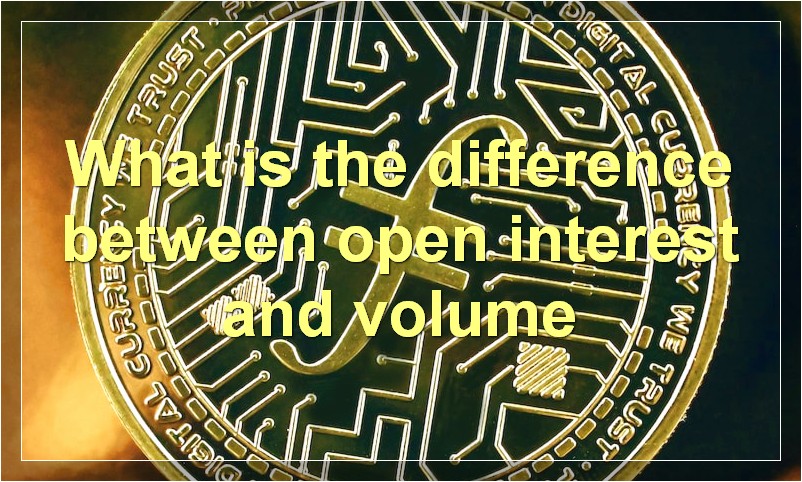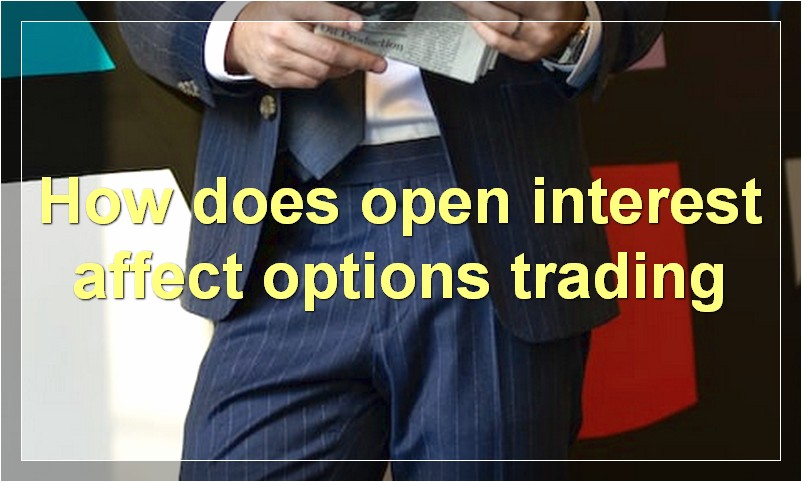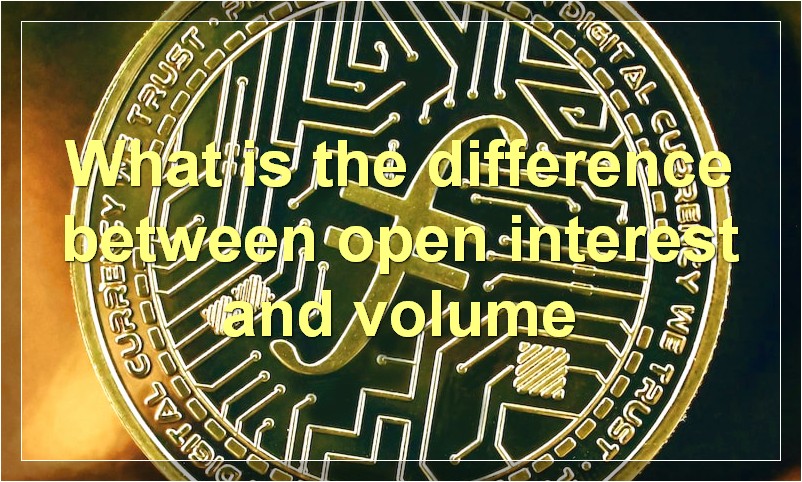When it comes to trading stocks, there are a lot of different metrics that can be used to gauge market activity. Two of the most commonly used indicators are open interest and volume. While these two metrics may seem similar, they actually provide different insights into the market.
What is the difference between open interest and volume

Open interest represents the number of contracts that have been traded but not yet liquidated by an offsetting trade. In other words, open interest is the number of outstanding contracts that exist for a particular market. Volume, on the other hand, represents the number of contracts that have been traded over a specified period of time.
Think of it this way: if there are 100 contracts open for a particular security, and 50 more are traded today, the volume for the day would be 50 and the open interest would become 150. If 40 of those contracts are then traded tomorrow, the volume for the day would be 40 and the open interest would be 110.
How is open interest calculated
Open interest is the number of contracts outstanding in a given market. It is calculated by taking the total number of contracts traded in a given day and subtracting the number of contracts that were closed out. The resulting number is the open interest for that day.
Open interest is a good indicator of market activity. If the open interest is increasing, it means that more contracts are being traded and the market is becoming more active. If the open interest is decreasing, it means that fewer contracts are being traded and the market is becoming less active.
What does open interest indicate
Open interest is the number of open contracts for a particular commodity. It is used as a measure of market activity and liquidity.
Why is open interest important
Open interest is the number of contracts of a particular commodity that have been purchased or sold but not yet liquidated by an opposite transaction. It is considered a measure of market activity and, specifically, the amount of buying and selling pressure in the market. Open interest is important because it can be used as a leading indicator to predict future price movements in the market. For example, if open interest increases while prices are rising, it is generally seen as a bullish sign, indicating that there are more buyers than sellers in the market and that prices are likely to continue to rise. Conversely, if open interest decreases while prices are falling, it is generally seen as a bearish sign, indicating that there are more sellers than buyers in the market and that prices are likely to continue to fall.
How does open interest affect options trading

Open interest is the number of outstanding contracts that exist for a particular security. It is one of the most important technical indicators when trading options because it can provide clues about the future direction of the underlying security. If open interest is increasing, it means that more traders are entering into new positions and this can be used as a bullish indicator. However, if open interest is decreasing, it could be a sign that traders are losing confidence in the market and this could be a bearish sign.
What happens to open interest when options are exercised
When options are exercised, the open interest in the underlying security is increased. This is because when an option is exercised, the holder of the option contract becomes the owner of the underlying security. Thus, the open interest is increased because there is now one more contract holder who owns the underlying security.
Is there a relationship between open interest and options prices
Open interest is the number of options contracts that are held by traders. It is a good indicator of market liquidity and can be used to predict future price movements.
Options prices are determined by a number of factors, including the underlying asset’s price, time to expiration, implied volatility, and interest rates. Open interest can also have an impact on options prices.
For example, if there is high open interest in a particular option contract, that means there are a lot of traders betting on the direction of the underlying asset’s price. This can create a self-fulfilling prophecy, where the high open interest causes the price of the option to increase, which then attracts even more traders and drives up the price even further.
How can open interest be used to gauge market sentiment
Open interest is the number of contracts outstanding in a particular market. It is used to gauge market sentiment because it reflects the number of traders who are currently holding positions in that market. The higher the open interest, the more liquid the market is and the more traders are participating. The lower the open interest, the less liquid the market is and the fewer traders are participating.
What are some factors that can affect open interest levels
Open interest is the number of outstanding contracts that are held by traders at the end of the day. This number can be affected by a number of factors, including the price of the underlying asset, the expiration date of the contract, and the number of traders involved in the market.

